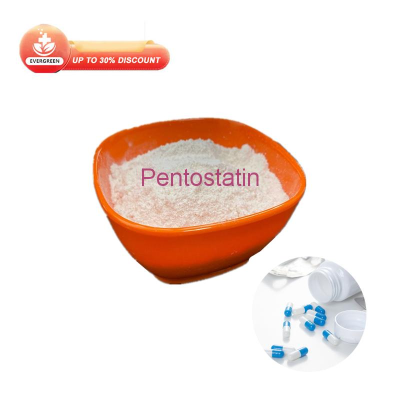-
Categories
-
Pharmaceutical Intermediates
-
Active Pharmaceutical Ingredients
-
Food Additives
- Industrial Coatings
- Agrochemicals
- Dyes and Pigments
- Surfactant
- Flavors and Fragrances
- Chemical Reagents
- Catalyst and Auxiliary
- Natural Products
- Inorganic Chemistry
-
Organic Chemistry
-
Biochemical Engineering
- Analytical Chemistry
- Cosmetic Ingredient
-
Pharmaceutical Intermediates
Promotion
ECHEMI Mall
Wholesale
Weekly Price
Exhibition
News
-
Trade Service
Hypoxia or insufficient tissue oxygenation is a key factor that makes most cancers difficult to cure, and it also leads to increased drug resistance of cancer cells
.
Therefore, remodeling the immunosuppressive microenvironment of tumors has become a new challenge to improve immune efficacy
Recently, researchers from the Research Group of Tumor Immunotherapy and Microenvironment (TIME) at the Luxembourg Institute of Health (LIH) published an article titled Targeting HIF-1 alpha transcriptional activity drives cytotoxic immune effector in the “Nature” sub-Journal “oncogene”.
The article on cells into melanoma and improves combination immunotherapy, based on a gene editing technology, shows us how targeting HIF-1α can inhibit tumor growth and drive cytotoxic T lymphocytes (CTL) into tumor tissues
.
As we all know, tumor hypoxia is mainly caused by the imbalance between the low oxygen supply caused by abnormal vascularization and the high oxygen consumption of tumor cells, and the rapid proliferation of tumor cells will accelerate the consumption of oxygen, thus limiting the available for further spread to The amount of oxygen in the tumor tissue
.
The main reason why cancer is difficult to cure is that tumor cells will continue to adapt to the bad environment.
Hypoxia Inducible Factor-1α (Hypoxia Inducible Factor-1α) is widely present in mammals and humans under hypoxic conditions.
The expression of a transcription factor is closely related to tumor proliferation, invasion and metastasis, tumor angiogenesis and other characteristics
.
Crystal structure of HIF-1α
The crystal structure of HIF-1α The crystal structure of HIF-1αStudies have found that melanoma, as a highly deteriorating skin tumor, can not only survive in hypoxic environments by activating HIF-1α, but also can hijack important immune system signals and destroy the resistance of conventional anti-cancer therapies such as radiotherapy and chemotherapy.
Sexual mechanism to give full play to their own advantages
.
Therefore, in order to gain insights into how cancer cells overcome the hypoxic environment in order to find effective anti-cancer therapies, the researchers specifically excised the HIF-1α/ARNT dimerization domain in mice based on CRISPR gene editing technology, and used the CRISPR gene editing technology to specifically excise the HIF-1α/ARNT dimerization domain in mice.
The effect of inhibiting the transcriptional activity of HIF-1α on tumor growth, immune cell infiltration and immunotherapy was evaluated in a preclinical mouse model of melanoma
.
The results of the study showed that the expression of HIF-1α downstream target genes such as carbonic anhydrase 9 (Ca-9), glucose transporter-1 (Slc2a1) and vascular endothelial growth factor (Vegf) did not increase, indicating that the HIF-knockout 1α can effectively block its transcriptional activity in melanoma, and blocking the transcriptional activity of HIF-1α can effectively inhibit the growth of melanoma
.
Targeting the transcriptional activity of HIF-1α can inhibit tumor growth
Targeting the transcriptional activity of HIF-1α can inhibit tumor growth.Targeting the transcriptional activity of HIF-1α can inhibit tumor growth.
Moreover, the results of immunohistochemical (IHC) staining of tumor sections showed that there was no CA-9 staining in HIF-1α (Del) mice
.
In addition, the researchers also found that by increasing the release of the chemokine "CCL5", it can promote the infiltration of immune cells such as NK and CD8+T into the tumor microenvironment and promote tumor regression
The infiltration of NK and CD8 + T cells into HIF-1α Del tumors is related to the release of CCL5 from tumor cells
The infiltration of NK and CD8 + T cells into HIF-1α Del tumors is related to the release of CCL5 from tumor cells.The infiltration of NK and CD8 + T cells into HIF-1α Del tumors is related to the release of CCL5 from tumor cells.
More importantly, the researchers also evaluated the therapeutic effect of the anti-tumor drug Acriflavine (ACF) in combination with two immunotherapies (anti-PD-1 immune checkpoint blocking antibody and TRP peptide vaccine) on melanoma
.
Surprisingly, the triple therapy (anti-PD-1 + TRP + ACF) can effectively inhibit tumor growth.
Combined with ACF improves the therapeutic effect of TRP-2 based vaccine and anti-PD-1 in melanoma
Combined with ACF improves the therapeutic effect of TRP-2 based vaccine and anti-PD-1 in melanoma.Original source:
Original source:Lequeux, A.
Targeting HIF-1 alpha transcriptional activity drives cytotoxic immune effector cells into melanoma and improves combination immunotherapy.
Leave a message here







